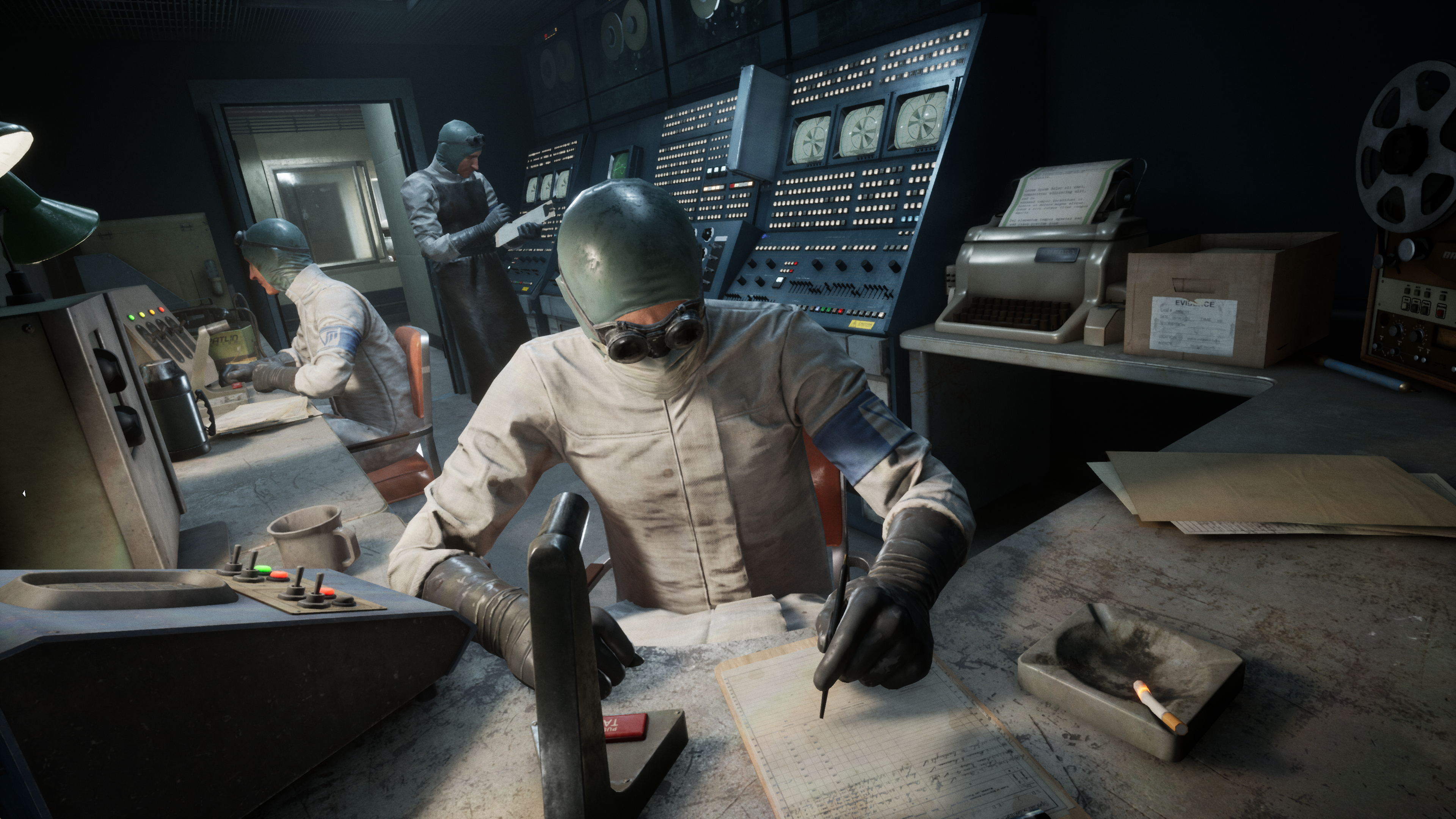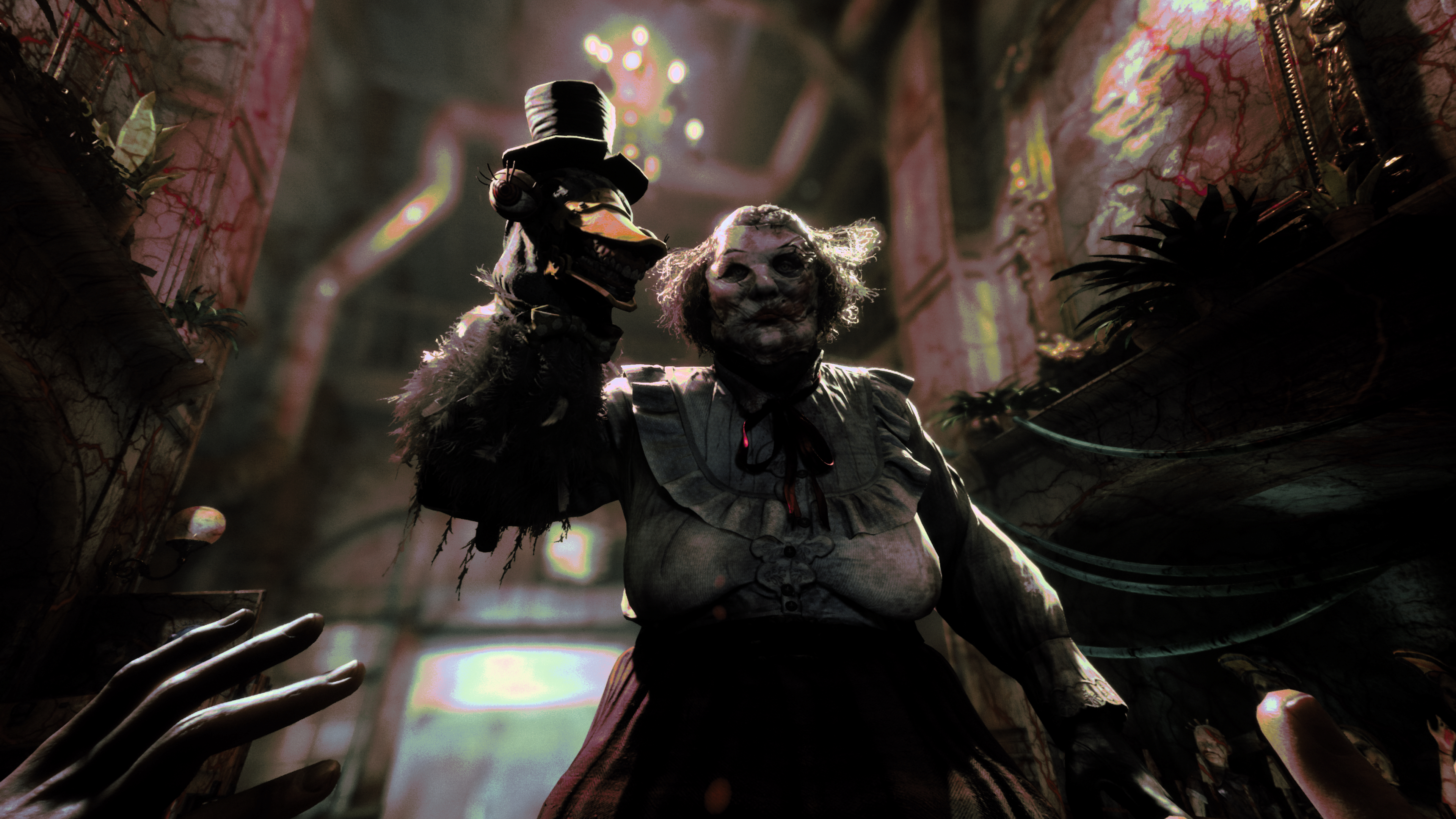
Chaos reigns as I dart through the poorly lit and glass-scattered hallways of The Outlast Trials. I’m being chased by all manner of beasts, I’ve been separated from my team, and I’m running low on health, it can’t get much worse. At least that’s what I thought.
Out of the corner of my eye I see a medicine cabinet through a crack in a nearby door; that’s it I’m finally going to be ok. I burst through the splintered doorway and leap toward the cabinet, but, before I get my hands on that sweet sweet medicine I get pulled back by my collar. Shaking, I look up and see the horrifying sight of a gas mask-wearing figure looming over me. Before I know it they’ve blasted a chemical agent in my face. Things are about to get weird.
As if it wasn’t bad enough to navigate through the cellars, tunnels, and sludge of the trials before, I now have to navigate through these terrors during an eerie psychedelic trip. The walls sway, colors dart across my eyes, I can no longer understand what is real and what is fake, and worse yet, there is something plaguing my walking nightmare, and it’s hunting me down.
A tall, tentacled spectre flashes on screen chasing me through the halls, I scream and wail but none of my teammates can see what terrifies me. We aren’t even halfway through the trial, and I’m convinced that I’ve lost the plot completely.
Page the doctor

It’s clear that Red Barrels did its homework in psychological terror for The Outlast Trials. With mind-bending horror seemingly around every corner, it’s hard not to lose yourself in the unsettling corridors of the Murkoff scientific facility.
In an interview with senior game designer Phillippe Morin and game director Alex Charbonneau, we discussed the inspiration behind the more psychological elements of The Outlast Trials. The main inspirations include Saw and Cube films, The Stanford Prison Experiment, MK Ultra, and Thought Reform and the Psychology of Totalism by Robert Jay Lifton.
You are constantly reminded of the failings of society as well as the limits of your own personal beliefs
The psychological brainwashing known as Thought Reform is central to the experience of The Outlast Trials and its development. “We want players to see the game devs as Murkoff, building environments and patching holes in their trials,” Morin says. This attitude is intended to blur game and reality, connecting players with the trials and the horrors taking place at the Murkoff facility on a deeper, more fundamental level.
“Murkoff’s goal is to break down the player’s beliefs,” Morin says – an idea that is at the centre of Lifton’s academic research on Thought Reform. Only after this is achieved, can the secretive company build the player back up with a new ideology and psychological framework. The process described by the developers is similar to how sleeper agents are created in fiction and is, all told, profoundly creepy.
Getting in your head

It’s evident in more ways than one that Red Barrel’s extensive research on Thought Reform is a critical part of what allows The Outlast Trials to deliver its unique breed of psychological horror. Lifton describes it as a two-part process that starts with a “confession, the exposure and renunciation of past and present ‘evil’; and re-education, the remaking of a man in a certain image”.
Whether it be in the sleeper rooms, the scientific debriefs, or the trials themselves, you are constantly reminded of the failings of society as well as the limits of your own personal beliefs. The only solution to these shortcomings is to subject yourself to the horrors of the trials and improve yourself to the standard that Murkoff requires.
Another key aspect of Thought Reform is observation as well as the feeling of being observed. During the trials you’ll find yourself being watched constantly, scrutinized at every moment. If you happen to look up while trying to complete an objective, you’ll see overhanging walkways filled with scientists taking notes, not to mention the sinister guards keeping watch. Lifton describes this as a useful scare tactic designed to promote “an internal extension of the prison environment”. This means that, no matter where you look, you’ll constantly be reminded that to Murkoff you are no more than a rat in a trap.

For Murkoff to complete the final stages of reform, players will have to submit themselves to a “series of pressures and appeals - intellectual, emotional, and psychological- aimed at social control and individual change”, Lifton said. One way Murkoff achieves this is through numerous soul-crushing trials. One such example sees players forced to escort a ‘traitor’ to his death and eventually kill him. While it is unknown if this man is actually guilty, players are forced to play along with the trial regardless in hopes of staying alive until the next treatment.
The goal of The Outlast Trials is to get inside your head and stay there, changing the way you act and approach the trials and your fellow participants. However, if Red Barrels and Murkoff get their way, then it may just change the way you think outside of the horror game as well.







